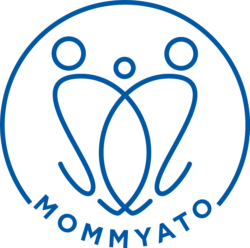23 Dec Reducing Risks of Thyroid Issues During and After Pregnancy
January is Thyroid Awareness month. When it comes to women’s health, understanding what your thyroid is and how it should be serving – not stagnating – your health and wellness is crucial. This knowledge is especially important during pregnancy and the postpartum period, when hormone fluctuations can leave you feeling like you’ve been through the physical and emotional ringer.
After giving birth, 5-10% of American women develop Postpartum Thyroiditis (fluctuation in hormones that regulate the body’s use of energy). But, 20% of women don’t recover and have chronically low thyroid hormone levels.²
The thyroid is a small, butterfly shaped organ, located at the base of the neck in front of your windpipe. It makes, stores and releases hormones that help your body use energy. Ideally, this energy regulation occurs at a steady pace, not too fast and not too slow. During pregnancy, your thyroid’s hormone regulation can become disrupted, and untreated thyroid disorders pose serious risks to both mother and developing fetus.
Hypothyroidism Symptoms and Pregnancy Risks
When the thyroid is sluggish in producing hormones, this causes a condition called hypothyroidism. Common symptoms of hypothyroidism are:
- fatigue
- weakness
- decreased appetite
- decreased sex drive
- constipation
- muscle aches
- puffy eyes
- brittle nails
- hair loss
- feeling cold when others are not
The most common type of hypothyroidism is Hashimoto’s disease, which is an autoimmune disorder causing chronic inflammation of the thyroid gland.¹
Hypothyroidism can cause maternal anemia, high blood pressure, and postpartum hemorrhage (severe bleeding after giving birth). The baby can suffer preterm birth, low birth weight, and thyroid problems of her own. There is also an increased risk of miscarriage or stillbirth. In severe cases of maternal hypothyroidism, babies can have problems with growth and development.
Hyperthyroidism Symptoms and Pregnancy Risks
When the thyroid produces too much hormone, this is called hyperthyroidism. The most common form is called Graves disease, characterized by a wide-eyed stare or bulging eyes. Hyperthyroidism, or too much thyroid hormone, causes:
- fatigue
- weight loss
- nervousness
- increased heart rate
- excessive sweating
- increase in bowel movements
- tremors
- feeling hot when others are not.¹
Untreated hyperthyroidism in the mother can lead to similar problems for both mother and baby: high blood pressure (mother), thyroid problems (goiter) in baby, low birth weight, premature birth, miscarriage or stillbirth.¹
Thyroid Problems After Pregnancy: Postpartum Thyroiditis
Postpartum Thyroiditis, which is similar to Hashimoto’s Disease, is when the thyroid produces high levels of hormone first, followed by low levels afterwards. The high thyroid levels usually start 1-4 months after giving birth and lasts approximately 1-3 months. You may experience:
- anxiety
- heart palpitations
- insomnia, fatigue
- irritability
- weight loss
Because many of these symptoms occur as a result of becoming a new mother, these signs of thyroid dysfunction are often overlooked.²
The period of low thyroid hormone usually begins 4-8 months after delivery, lasting 9-12 months. Common symptoms are:
- fatigue
- weight gain
- constipation
- dry skin
- poor exercise tolerance
- Low thyroid hormone is also linked to postpartum depression.²
For most women experiencing Postpartum Thyroiditis, thyroid hormone function returns to normal within 12-18 months after delivery. But, 20% of women continue to have chronic hypothyroidism.²
How Can I Prevent Thyroid Problems Both During and After Pregnancy?
- Get screened before pregnancy. Ask about screening during a prenatal check-up if you are concerned about symptoms. Screening during pregnancy involves an exam, blood tests, and sometimes an ultrasound of your thyroid.
- Know your family and personal health history. A family history of thyroid disorders or a personal health history of autoimmune diseases and thyroid disorders elevate your risk of thyroid dysfunction during pregnancy and postpartum.
- Take thyroid medications as prescribed by your healthcare provider. There are medications that are safe during pregnancy and breastfeeding. Check out this resource to research your thyroid medication:
- Make lifestyle modifications to support your healing process. Learning to manage your daily stress, sleep and diet are critical to complete healing and sustaining long term health.
When it comes to thyroid dysfunction during pregnancy and postpartum thyroiditis, prevention, treatment, and cure are the common goals. Being proactive about concerns or symptoms will ensure a healthy pregnancy and postpartum period for both you and your baby. Health maintenance is key.
For more information contact the American Thyroid Association.
Resources
American Thyroid Association
Organization of Teratology Information Specialists (OTIS)
Look up Medicine Used During Pregnancy and Breastfeeding
References
- American College of Obstetricians and Gynecologists (ACOG). January 2021. Thyroid disease.
- American Thyroid Association. 2021. Postpartum Thyroiditis.



